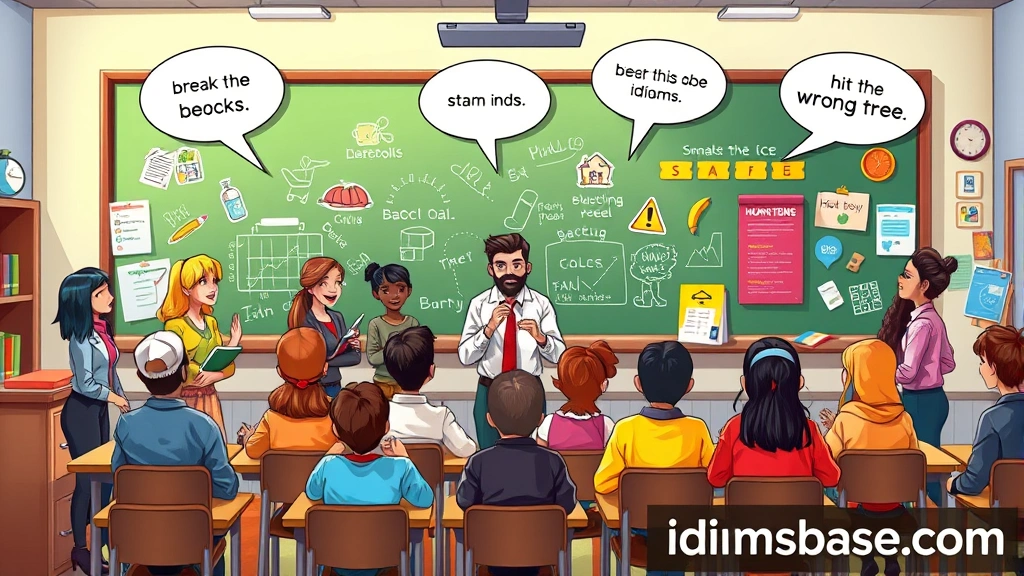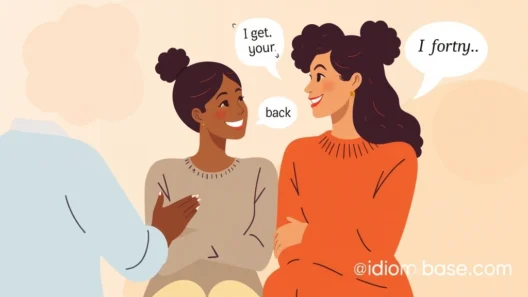Hey there, amazing educators! Ever feel like your classroom is a world of its own, full of unique challenges, triumphs, and sometimes, just plain hilarious moments? You’re not alone! Teaching isn't just a job; it's a calling, a passion, and often, a wild adventure. And guess what? Our everyday language is packed with expressions that perfectly capture the essence of what it means to be a teacher.
Idioms are those little linguistic gems that add color and nuance to our conversations, and for teachers, they can be incredibly relatable. They offer a shorthand way to describe situations, feelings, and experiences that are all too familiar in the bustling world of education. So, let’s dive into a treasure trove of 35 idioms that you, as a teacher, will absolutely "get" – and probably use more often than you realize!
35 Idioms for Teachers: Your Everyday Classroom Companion!
Get ready to nod along, chuckle, and perhaps even exclaim, "That's so true!" as we explore these fantastic idioms.
- To learn the ropes: When you’re new to a school or a grade level, you're "learning the ropes" – figuring out how things work!
- To be on the same page: Crucial for team teaching or departmental meetings. You want everyone "on the same page" about curriculum or student support.
- To hit the books: What you tell your students to do before a big test, or what you do yourself when prepping for a new subject.
- To burn the midnight oil: Late-night grading, lesson planning, or report card writing? You're definitely "burning the midnight oil."
- To think outside the box: Encouraging creativity in your students, or finding innovative solutions for classroom challenges.
- To go the extra mile: That moment you stay late to help a struggling student, or organize an extra-curricular activity.
- To be a busy bee: Teachers are always buzzing around, aren't they? Multitasking like a "busy bee."
- To have eyes in the back of your head: Every teacher's superpower, right? Knowing exactly what's happening even when your back is turned.
- To be a quick study: When a student (or a colleague!) picks up new concepts rapidly.
- To pass with flying colors: The ultimate goal for your students on their exams!
- To be a class act: Describing a student, a colleague, or even yourself when you handle a tough situation with grace and professionalism.
- To hit a nerve: When a lesson or a discussion really resonates with a student, or perhaps touches on a sensitive topic.
- To get a handle on something: When a student finally understands a difficult concept. "They're really getting a handle on fractions now!"
- To be a broken record: When you have to repeat instructions or expectations over and over again. Sound familiar?
- To bite off more than you can chew: Taking on too many committees, projects, or extracurriculars. We've all been there!
- To throw in the towel: What you hope your students never do, even when a subject is tough.
- To be a tough nut to crack: A challenging student, or a particularly difficult problem on a test.
- To iron out the kinks: Solving problems in a new lesson plan or classroom routine.
- To get the ball rolling: Starting a new project, a group activity, or the school year itself!
- To teach an old dog new tricks: Sometimes, it feels like this when you're trying to implement a new technology or teaching method.
- To be on thin ice: When a student's behavior is pushing the limits.
- To nip it in the bud: Addressing a small behavioral issue before it escalates.
- To give someone the benefit of the doubt: Believing in your students, even when their explanations are a little… creative.
- To make headway: Seeing progress in your students' learning or in a long-term project.
- To be a breath of fresh air: A positive new student, a supportive colleague, or a successful new teaching strategy.
- To keep your chin up: What you tell your students (and yourself!) after a challenging day or a setback.
- To get your ducks in a row: Organizing all your materials, lesson plans, and classroom setup before a new unit or school year.
- To be a shining example: A student who excels, or a colleague whose dedication inspires you.
- To have a lightbulb moment: That wonderful instant when a student finally understands something complex!
- To put your thinking cap on: Encouraging students to problem-solve, especially during a tricky activity.
- To walk on eggshells: When dealing with a particularly sensitive student or a delicate classroom situation.
- To learn by heart: Memorizing facts, poems, or formulas. You encourage your students to do this often!
- To be a master of all trades: Teachers often wear many hats – instructor, counselor, mentor, disciplinarian, tech support!
- To be full of beans: Students with endless energy, especially right after recess!
- To go with the flow: Adapting to unexpected changes in the school day, like fire drills or last-minute assemblies.
These idioms are more than just phrases; they're snapshots of the teaching experience, reflecting the humor, challenges, and immense rewards of your profession.

Frequently Asked Questions About Idioms for Teachers
Q1: Why are idioms important for teachers to know?
A1: Idioms add richness to language and understanding them helps teachers better comprehend nuanced conversations, literature, and popular culture. Using them can also make your language more engaging and relatable for students, helping them grasp complex ideas through familiar imagery. Plus, they're a fun way to connect with the unique experiences of other educators!
Q2: How can I teach idioms to my students effectively?
A2: Great question! You can teach idioms by:
- Contextualizing them: Use them naturally in your speech and then explain their meaning.
- Visual aids: Draw pictures or find images that represent the literal and figurative meanings.
- Storytelling: Create short stories where idioms are used, then have students guess their meanings.
- Interactive games: Charades, Pictionary, or matching games can make learning idioms fun.
- Idiom of the week: Introduce one new idiom each week and encourage students to use it.
Q3: Are these idioms specific to English-speaking countries?
A3: While these idioms are primarily from English language usage, many concepts they represent (like working hard, understanding something, or facing challenges) are universal. The specific phrasing might differ, but the underlying human experience often resonates across cultures. Understanding these English idioms is valuable for anyone teaching in an English-speaking environment or teaching English as a second language.
Q4: Can I use these idioms in a formal teaching setting, like parent-teacher conferences?
A4: You can, but with caution! While some, like "to be on the same page" or "to make headway," are perfectly acceptable and professional, others, like "to have eyes in the back of your head" or "to be full of beans," might be better reserved for informal conversations with colleagues or students. Always consider your audience and the context to ensure clarity and professionalism.
Key Takeaways
- Idioms add flavor: They make language more colorful, expressive, and often, humorous.
- Relatability is key: These 35 idioms perfectly capture the unique joys and challenges of being an educator.
- Enhance communication: Understanding and using idioms can improve your communication with both students and colleagues.
- A teaching tool: Idioms are fantastic tools for teaching language, critical thinking, and cultural nuances to your students.
So, the next time you're "burning the midnight oil" grading papers, or a student has a wonderful "lightbulb moment," you'll know exactly which idiom to reach for. Keep "keeping your chin up," amazing teachers, and remember, you're doing "a class act" every single day! Which of these idioms resonates most with you? Share your thoughts in the comments below!








